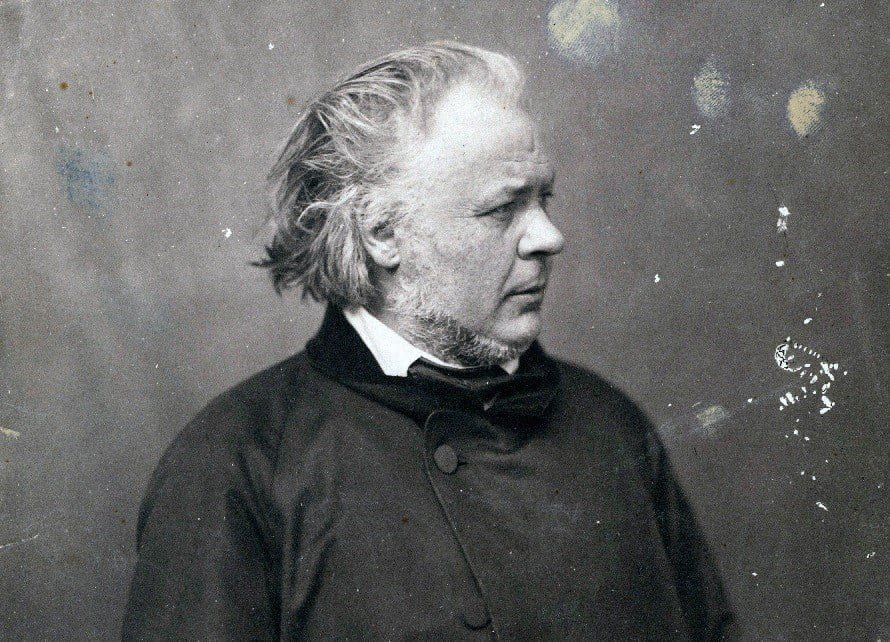Honoré Daumier, a multifaceted artist born in Marseille, France, in 1808, left an indelible mark on the world of art. From his early struggles as a young artist in Paris to his later acclaim as a prominent caricaturist, painter, illustrator, engraver, draftsman, and sculptor, Daumier’s life was a testament to perseverance and artistic evolution.
Daumier’s Early Life and Influences:
Daumier’s upbringing in Paris was marked by financial challenges, prompting him to take on various jobs as a child. Despite these hardships, his passion for art flourished, nurtured by visits to the Louvre museum where he drew inspiration from the works of masters like Rubens, Rembrandt, Fragonard, and Goya.
The Emergence of a Caricaturist:
In 1828, Daumier embraced lithography, a technique that would play a pivotal role in the development of caricature. By 1830, he gained recognition for his social criticism-laden drawings in the magazine La caricature. However, his bold portrayal of King Louis Philippe I led to his imprisonment in 1832, signaling the risks he took to challenge societal norms.
Adapting to Censorship:
The mid-1830s brought about prohibitions on trade unionism and increased censorship in France. Daumier, adapting to the constraints, shifted his focus to ridiculing customs and social norms, avoiding direct political criticism. This period of restraint persisted until the lifting of censorship after the 1848 French Revolution.
Transition to Painting:
Following the revolution, Daumier’s attention turned more towards painting, influenced by the classics he had admired in his youth. His series “Histoire Ancienne” (1841-1843) in Le Charivari showcased his ability to update classic themes with political provocations and social commentary.
Later Years and Recognition:
Dismissed from Le Charivari in the late 1850s due to perceived subversiveness, Daumier returned after the director’s death in 1863. His caricatures continued until 1872, overshadowing his paintings, which were relatively unknown to the public. However, the poet Charles Baudelaire recognized Daumier’s talent, ranking him alongside artists like Delacroix.
Legacy and Influence:
Daumier’s matured style, characterized by expressive sculptures, dark masses, and a mastery of chiaroscuro, influenced the development of expressionism. Notable paintings such as “The Miller, His Son and the Donkey” and “Chess Players” showcase his ability to evoke emotion through his art.
Financial Struggles and a Helping Hand:
Around 1865, Daumier faced financial difficulties, prompting friends like Geoffroy Dechaume and Camille Corot to offer him a house in Valmondois. This generous gesture provided Daumier with a few years of respite.
Final Resting Place:
In 1879, Honoré Daumier passed away, and a year later, his remains were moved to the cemetery of Père-Lachaise, where he found his eternal resting place beside his friend Corot.
Conclusion:
Honoré Daumier’s journey from a struggling artist to a revered figure in art history reflects not only his artistic prowess but also his resilience in the face of societal challenges. His legacy endures through the impactful social commentary of his caricatures and the emotive power of his paintings, ensuring his place among the influential figures in modern art.
FAQs:
Q1: What led to Honoré Daumier’s imprisonment in 1832?
A1: Daumier’s imprisonment in 1832 was a result of a drawing portraying King Louis Philippe I as Gargantua, a giant glutton from François Rabelais’ work, which was deemed disrespectful and led to his arrest.
Q2: Why was Daumier dismissed from Le Charivari in the late 1850s?
A2: Daumier was dismissed due to the perceived subversiveness of his drawings. However, he was reinstated after the director’s death in 1863.
Q3: How did financial difficulties affect Daumier, and what was the gesture that provided him respite?
A3: Around 1865, Daumier faced financial difficulties. Friends like Geoffroy Dechaume and Camille Corot offered him a house in Valmondois, providing him with a few years of rest and tranquility.






Leave a Reply